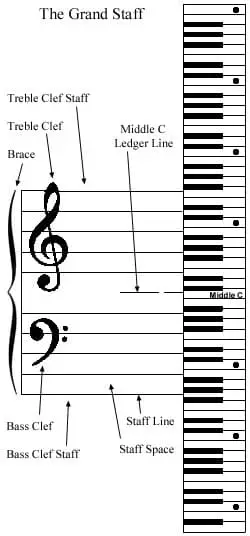- Home
- Learn to Play Piano
- Play Piano By Ear
How To Play Piano by Ear for Beginners
This article may contain compensated links. Please read the disclosure for more info.
Welcome to the exciting world of piano playing! If you're a beginner pianist looking to learn how to play piano by ear, you're in the right place.
Playing piano by ear is a fantastic skill to have, and it's easier than you might think. Here is a mini guide with a step-by-step tutorial for beginner pianists to learn how to play piano without sheet music. By learning to play piano by ear, you'll be able to play your favorite songs without having to rely on sheet music or complicated notation.
How Do You Play Piano By Ear?
Playing piano by ear is a wonderful way to create music and express yourself through your art. It means being able to pick out pieces that you know or have heard, without relying on sheet music. This approach allows you to play your own compositions and improvise, and is a skill that can open up new musical worlds for you.
Some people seem to be naturally gifted at playing piano by ear, while others may need to work a bit harder. But regardless of your starting point, with practice and determination, you can develop this valuable skill and take your piano playing to new heights.
In this guide, we'll take you through everything you need to know to get started playing piano by ear!

Getting Started Playing By Ear

The trick is to start very simple. Learning to play piano by ear can be a daunting task for beginners, but the key is to start simple.
To get started, choose a song that you know very well, such as "Hot Cross Buns," and focus on picking out its melody without the aid of sheet music.
Too easy?
It's important to pick a song that is simple enough to play without sheet music, or else you might find yourself getting frustrated and giving up. But don't be afraid to choose a different song if "Hot Cross Buns" is too easy for you. You can select any tune that you enjoy, as long as it is simple enough to play by ear.
Then, step by step...here's what you do:
1. Listen to the melody several times.
Once you have your song, the first step is to listen to the melody several times. This will help you become familiar with the song's structure and rhythm.
2. Find the first note of the melody.
Next, play any key on the piano and start searching for the first note of the melody.
3. Pick out the rest of the notes one by one.
From there, you can gradually pick out the rest of the melody one note at a time, either by humming along or playing and listening to segments of the recording.
4. Keep picking out the melody of the song one little bit at a time until you have it all.
It's important to focus solely on the melody of the song and not worry about the background accompaniment.
5. Mistakes are allowed!
Make as many mistakes as you need- you will actually learn to find your way around the keys of the piano better if you "fiddle around" a bit.
6. Memorize.
When you have the melody down, play it several times to commit it to memory. You can play it with one hand or both hands, switching back and forth to give yourself more practice.
As you become more confident in your ear training and piano playing abilities, you can move on to more complex pieces and challenge yourself to play by ear more frequently. With practice and determination, you will soon be able to play a wide range of songs without relying on sheet music.
Easy Songs to Play By Ear
I'm sure you know of several little songs or melodies, but here is an idea of some very simple ones to start with:
- Twinkle, Twinkle Little Star
- Row, Row, Row Your Boat
- A Thousand Miles by Vanessa Carlton
- Silent Night
- When the Saints Go Marching In
Adding Accompaniment

The melody could need some accompaniment, right?
- OK. Find the note that finished your piece, the very last note. Does it sound as if that is the end of the piece? This note is called the Tonic. This is in most cases the first note in the scale your little piece is made from. We will call this note I (1).
- Now count up from this note (being 1); the next up is 2 and so on. Find the IV (4th) and the V (5th) note.
Please note: If your melody had some black keys in it, then you might have to alter the bass notes to a black key right next to it too. Listen to what sounds best.
- With your left hand play the first note (I) with your fifth finger (your pinkie), your fourth note (IV) with your 2nd finger, and your fifth note (V) with your first finger (your thumb). Practice playing them one at a time.
Now the fun part!
- Play the melody you learned with your right hand.
- Test the bass-notes you learned with your left hand- one at a time- together with the melody. See together with which melody notes they fit best.
- Keep the left hand notes longer, but listen to where you have to change or it sounds ugly. Stick with only these three bass notes for now, though (I, IV and V).
- You can also try to sing along the melody with your left hand bass notes.
This is a great exercise in ear-training, and you are now playing piano by ear!
Continue to play piano by ear and pick out other songs (or make up your own!) that you like, but remember to choose very simple songs at first. Here is a method for learning how to play piano by ear.
The I, IV, V (Roman Numerals) formula works for many, many songs and you could also play piano chords this way; just build the bass note with a third and a fifth to a chord in root position.





